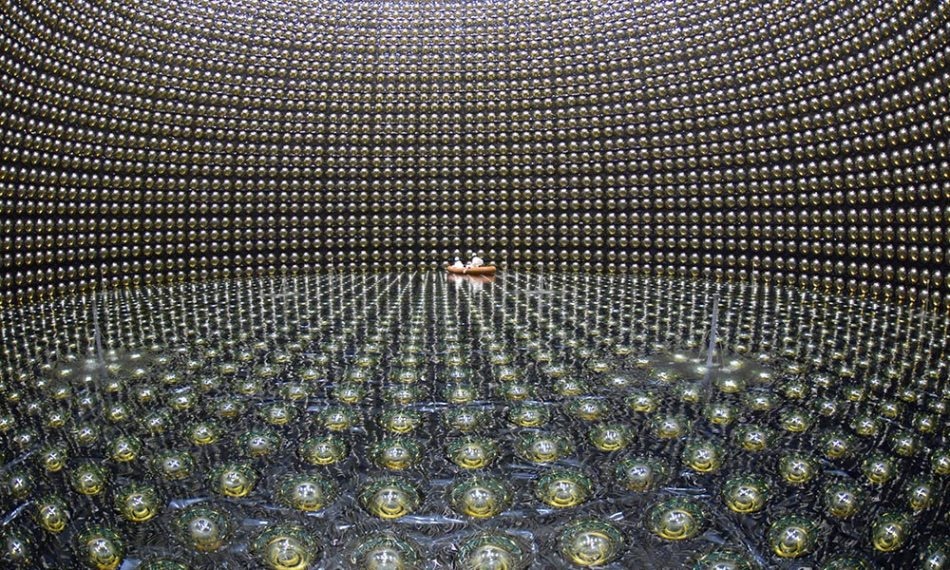Aug 31 2016
Physicists love good symmetry—and that love is more than aesthetic appeal. One of the more important symmetries in all of science is the one between antimatter and matter.
 T2K's detector. (University of Tokyo photo / Kamioka Observatory, Institute for Cosmic Ray Research)
T2K's detector. (University of Tokyo photo / Kamioka Observatory, Institute for Cosmic Ray Research)
Energy in the early universe was transformed into equal parts of matter and antimatter. Barring anything else, those equal parts should have destroyed each other and left us with no matter with which to make stars and planets, and people and dogs.
So physicists reason that something must have broken the matter-antimatter symmetry in the early universe, leaving us with a universe dominated by, well, stuff—one in which we (and dogs) can exist. The puzzle of how the matter-antimatter symmetry was broken is one of the great questions that particle physicists are trying to answer.
University of Rochester graduate student, Konosuke (Ko) Iwamoto, updated the physics world on this question at the 38th biennial International Conference on High Energy Physics (ICHEP), in Chicago earlier this month.
Iwamoto presented the highly anticipated findings from the Japan-based T2K neutrino experiment collaboration concerning the minute differences in the oscillations of subatomic particles called neutrinos and antineutrinos. (Almost every particle has an antimatter counterpart: a particle with the same mass but opposite charge.)
The new results suggest that the matter-antimatter symmetry may have been broken by neutrinos. T2K’s experiments show that neutrinos and antineutrinos behave differently—the imbalance may have disrupted the matter/antimatter balance. Though the results are not conclusive—there is a 1-in-20 chance that their results are a fluke—but physicists are excited about the findings and further data gathering from T2K and other experiments is underway.
“It is fabulous that Ko was chosen to present the findings of the T2K collaboration at ICHEP,” says Rochester professor of physics, Steven Manly. “ICHEP is the biggest international conference in particle physics and it was started in the 1950s by the then chair of Rochester’s physics department, Robert Marshak. Everyone still calls it the ‘Rochester conference.’”
Source: http://www.rochester.edu/